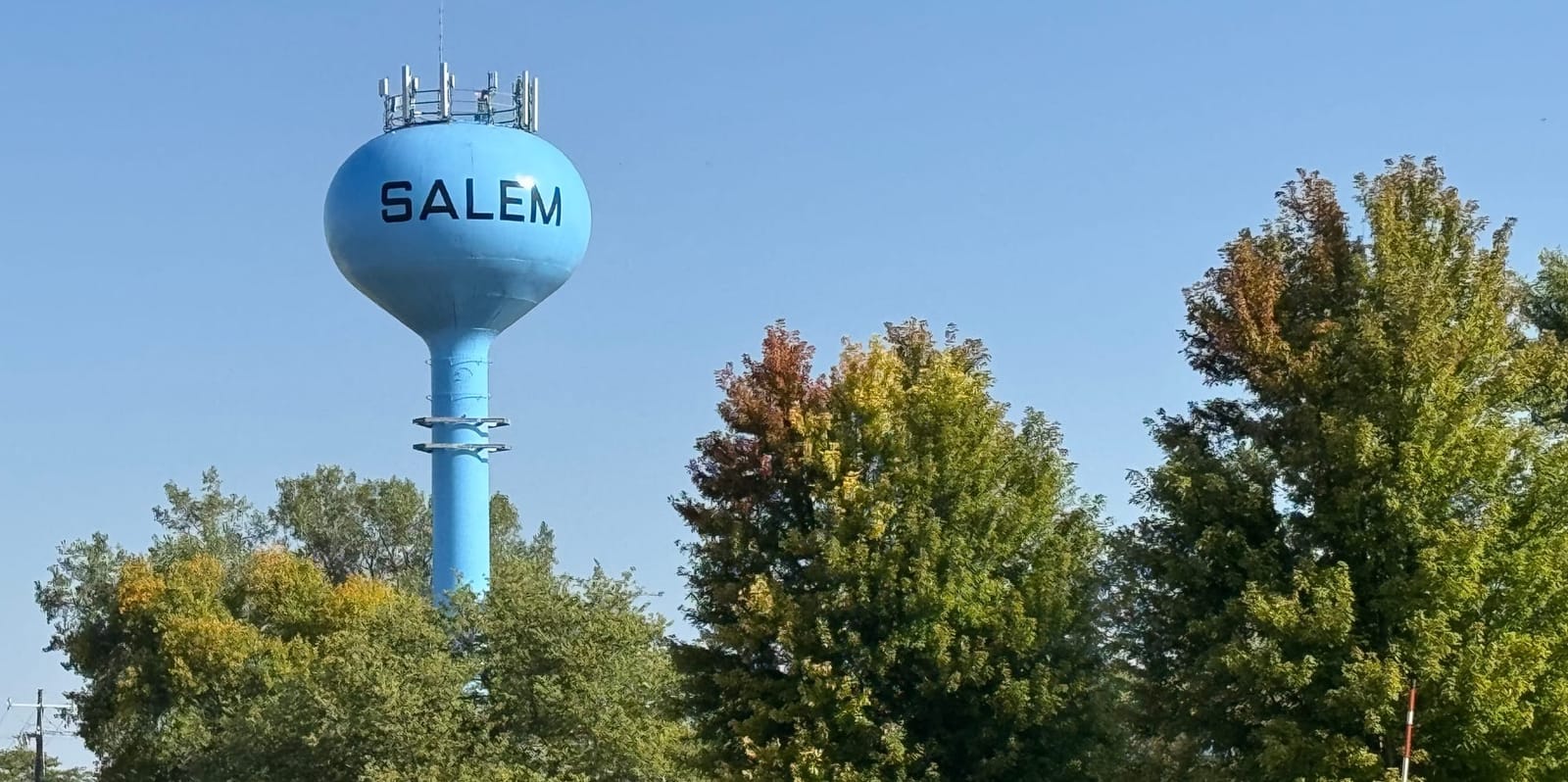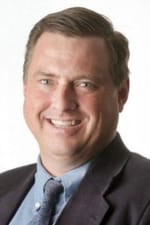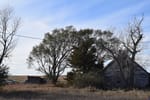SALEM, S.D. – In an effort to build new housing that will help this small eastern South Dakota city recover from two weather disasters in the same year, community leaders, local businesses and even individual residents have put up their own money – without any potential financial return – to help make it happen.
The town of about 1,300 people just north of Interstate 90 midway between Sioux Falls and Mitchell is still rebounding from two separate derecho wind storms in 2022 that took no lives but damaged numerous homes and businesses.

To lay the groundwork for a new subdivision that could include up to 24 new houses, Salem economic development leaders needed to find roughly $1 million in 2023.
Two years later, the city and the Salem Economic Development Corp. (SEDC) have reached their funding goal and are using a combination of a state grant, donations from a local bank and insurance company, and contributions from about 50 businesses and individual residents to fund the project.
“It was amazing to see people wanting to invest in their community because they’re not getting any return on their money up front,” said Jeremy Grady, an executive at First Dakota National Bank in Salem who also serves on the SEDC board.
During the wind storms that hit in May and July of 2022, Salem saw a number of homes damaged and had its National Guard Armory and the Avantara nursing home damaged beyond repair.
Avantara decided against rebuilding the nursing home or opening a new facility in Salem, which stung but which also suddenly made land available for new development.
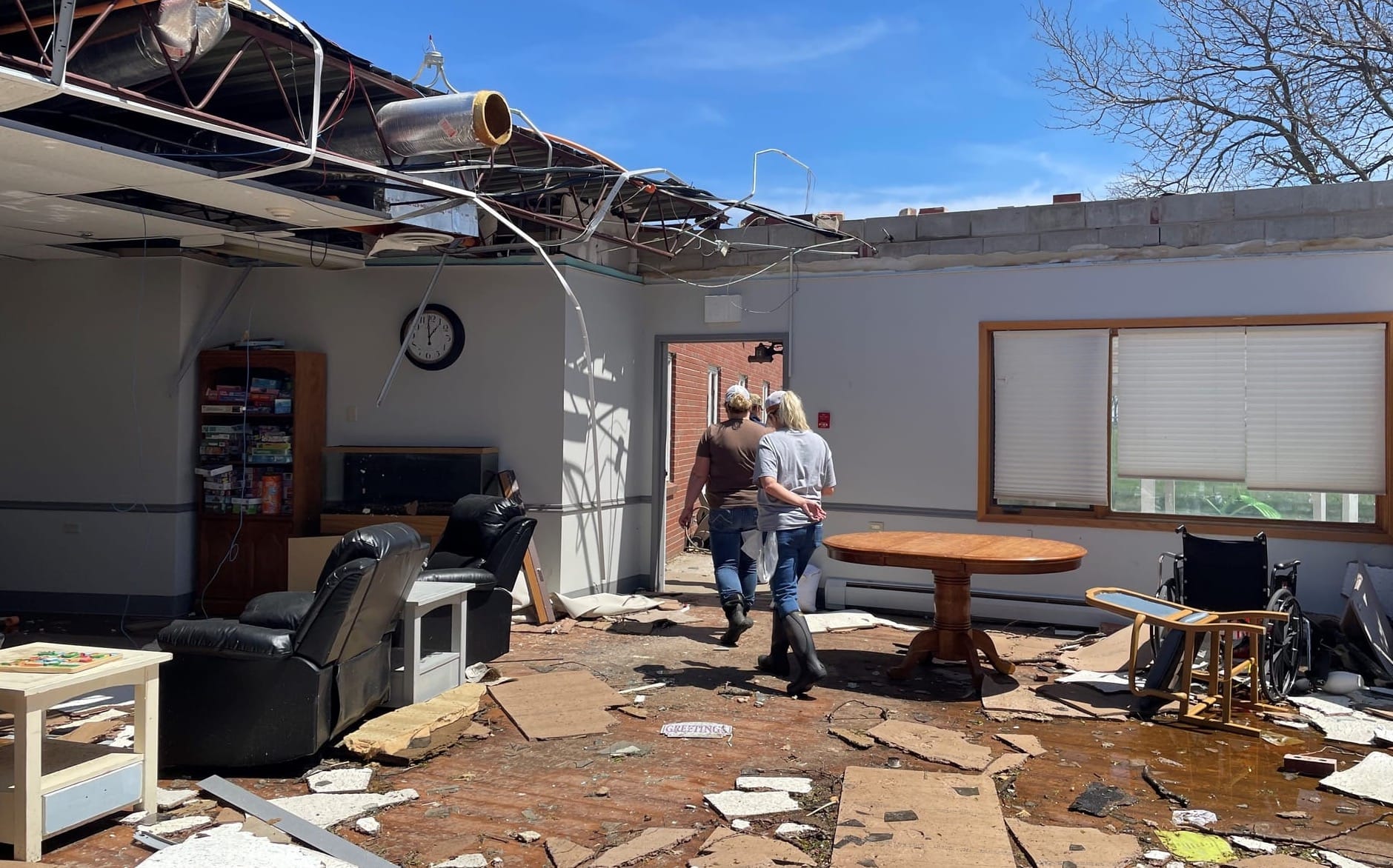
In the years before the derechos, local government and business leaders had already realized they were hampered in encouraging housing, commercial or industrial development in Salem.
This story is part of an ongoing South Dakota News Watch series called Engage South Dakota using storytelling, crowdsourcing and community engagement to identify and share potentially replicable housing solutions.
Each story includes the community's response, insights to be learned, proof of whether the ideas are effective and limitations on the efforts.
Key takeaway for this story: Obtaining funding to expedite housing growth requires innovation, determination and a combination of grants, loans and local taxpayer support.
Read about other South Dakota housing solutions.
Response: Revitalizing development efforts
At the time of the storms, Salem faced many of the same challenges in housing development as other small, rural South Dakota cities. That included a shortage of buildable lots, limited interest from homebuilders seeking to make a quick profit, and a lack of population and employment growth.
Beyond that, the city’s economic development group had withered due to inaction.
"Economic development had been dormant for some time," said Mayor Glenda Blindert, co-owner of Blindert Insurance Agency and a leading proponent of housing and commercial development in Salem.

With guidance from the Sioux Metro Growth Alliance, a regional development agency located in Sioux Falls, the SEDC was revived in late 2021 and obtained non-profit status, a board and bylaws to guide its efforts.
The relaunch of the SEDC has been critical to the effort to build new housing in Salem, as the group played a major role in obtaining the land, funding and community support to build a new subdivision.
“For us, it wasn’t a chicken-or-the-egg thing because we know that in order to have more businesses we are going to need more housing,” said Grady.

In 2023, the SEDC began raising the roughly $1 million needed to buy the land and build the infrastructure for a new housing subdivision.
As has taken place in other small South Dakota cities seeking to encourage construction of new housing, Salem leaders knew that developers would be far more likely to build homes if the municipality provided the streets and sewer and water systems in advance.
The SEDC was able to secure about $330,000 in a matching grant from South Dakota Housing, a state agency that uses state and federal funds to boost local development projects.
First Dakota Bank in Salem donated $50,000 in seed money and matched further donations up to $50,000, making the bank’s total contribution $100,000, Grady said. The Blindert Insurance Agency, the business co-owned by the mayor, contributed another $50,000, he said.
Insights: Locals step up with support and money
After that, the group was able to raise another $100,000 from 50 other local businesses and individuals who did so knowing that there would be no other return on investment other than helping the community grow and thrive, Grady said.
The SEDC spent about $250,000 to buy the land and clear it for construction and has used state and local money to build roads and install water and sewer for the subdivision. The SECD is borrowing the remainder of the funding needed to build out the infrastructure, Grady said.
To date, four of the 24 lots in the subdivision have been sold and one twin home has been built as a “spec” home, he said. The SEDC has also received interest from potential buyers who include developers that will build and sell houses or individuals who hire their own housing contractor, he said.
“There’s going to be a lot of housing opportunities, which is great because housing drives your local economy,” Grady said.
As of November, the underground systems are in place and roads have been mapped and cleared in the Colonial Estates subdivision, with final road paving to occur in the spring, Grady said.
Limitations: Rural housing market a challenge
So far, it appears the concept is working, though some challenges lay ahead.
Brian Kappenman is a developer who so far is the only buyer of lots in the new Salem subdivision. He bought three lots with plans to build two twin homes, which are essentially side-by-side duplexes. One of the twin homes is fully built, and both sides are available for sale.
Kappenman said he paid $42,000 for each of the three lots, less than half the per-lot price he paid in nearby Hartford, where he is also building homes.
Each side of the twin home has 1,758 square feet of space with three bedrooms and two bathrooms, a three-stall garage and a list price of $365,000, which is lower than average for new homes in the region, he said.

Kappenman, who developed housing in Salem seven years ago, said efforts by the city and the SEDC to build out the infrastructure made his housing project more attractive by reducing overhead costs.
“As far as price-wise and the size of the lots, they’re doing it right, and the city and development group are very easy to work with,” Kappenman said.
However, Kappenman said he hoped he would have sold his twin homes faster or at least had more interest than he has so far, with high interest rates and location dampening buyer interest.
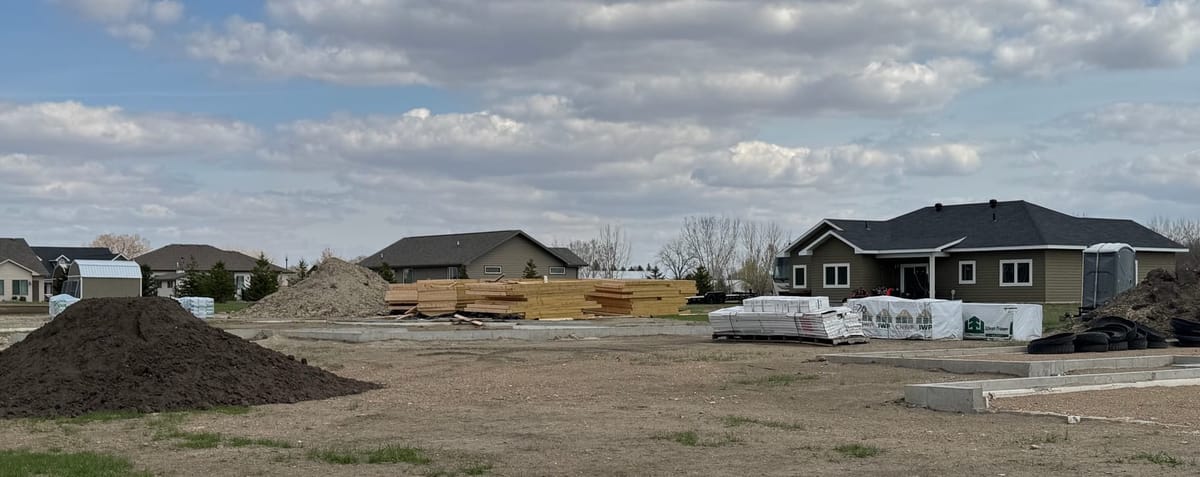
“You’re kind of far away from Sioux Falls and Mitchell, so it makes it harder to sell those homes,” he said. “You’ve got to have people to buy, and so far I haven’t been able to get that done.”
As city leaders try to develop housing that they hope will make Salem more attractive to new employers, Kappenman said the lack of businesses and industry in the city may deter developers from buying lots and building homes in the new subdivision.
“They need to bring in some new businesses because nobody is going to build if there’s nobody to buy,” he said.
Proof: First home project builds momentum
Grady said Kappenman’s willingness to build a home in an unfinished subdivision shows confidence in the project and has helped maintain a strong level of community support.
“Nothing creates buzz in a town like moving dirt. And when he started moving dirt and building things, you could start to see what this can look like,” Grady said.
As far as luring new business and industry to Salem, Grady said the SEDC is seeking to attract several small-scale employers rather than a single large operation.
"We’re not looking for a company to come in that’s going to hire 100 people. Our sweet spot is really 15 to 25 employees," he said. "Given our proximity to Sioux Falls, Mitchell and Madison, I think we sit in a really nice spot."
“It was amazing to see people wanting to invest in their community because they’re not getting any return on their money up front.” – Jeremy Grady
Mayor Blindert said the new subdivision will be a first step in what she believes will be a positive future for Salem.
"We'll see more businesses, more property and sales tax dollars, and more families and children in our school system to keep it viable," she said.
Grady said interest in living in Salem or opening a business there will rise if people visit and see the city's amenities that include a new city hall and community center, a budding industrial park, a strong education system, a sprawling sporting complex and, ultimately, a subdivision bursting with new homes.
Grady, an Iowa native, said he planned to live in Salem a year or two but has instead spent the past 28 years working, living and supporting the community.
"It’s a great place to raise a family," he said. “Everything we’re doing is for the betterment of the community, and I believe the direction the city is going is very positive.”

This story was produced by South Dakota News Watch, an independent, nonprofit organization. Read more stories and donate at sdnewswatch.org and sign up for an email to get stories when they're published. Contact investigative reporter Bart Pfankuch at bart.pfankuch@sdnewswatch.org.

